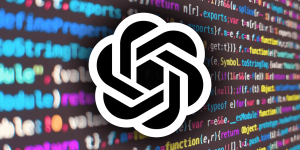Why the New York Times is Suing OpenAI and Microsoft for AI Training Introduction Hi, I’m Fred, a blog writer and an AI enthusiast. I’m fascinated by the potential of artificial intelligence to transform various domains, such as education, health, entertainment, and more. However, I’m also aware of the ethical and legal challenges that
Why the New York Times is Suing OpenAI and Microsoft for AI Training
Introduction
Hi, I’m Fred, a blog writer and an AI enthusiast. I’m fascinated by the potential of artificial intelligence to transform various domains, such as education, health, entertainment, and more. However, I’m also aware of the ethical and legal challenges that AI poses, especially when it comes to using existing content to create new ones.
That’s why I’m writing this article to explain the recent lawsuit that the New York Times filed against OpenAI and Microsoft, two of the leading companies in the AI field. The lawsuit alleges that the companies have unlawfully used the newspaper’s articles to train their AI models, such as ChatGPT, a popular chatbot that can generate realistic and engaging conversations.
In this article, I will cover the background and context of the lawsuit, the motivations and arguments of both parties, and the technical details of how AI is trained using articles. I will also discuss the implications of this case for the future of AI and journalism, and what it means for you as a reader and a content creator.
What is the New York Times Lawsuit About?
The New York Times lawsuit, filed on December 27, 2023, in the U.S. District Court for the Southern District of New York, claims that OpenAI and Microsoft have infringed the newspaper’s copyright and abused its intellectual property.
The lawsuit states that the companies have used the newspaper’s articles, without permission or compensation, to train their AI models, notably ChatGPT, a language model that can generate coherent and diverse texts on various topics and styles.

Image by: https://attorneyatlawmagazine.com/
The lawsuit argues that the companies have exploited the newspaper’s work to create AI products that compete with the Times, and that the use of the articles violates the fair use doctrine, which allows limited use of copyrighted material for purposes such as criticism, comment, news reporting, teaching, scholarship, or research.
The lawsuit seeks damages and injunctive relief, as well as a declaration that the companies’ use of the articles is unlawful and infringes the newspaper’s rights.
Why Did the New York Times Sue OpenAI and Microsoft?
The New York Times is one of the most respected and influential newspapers in the world, with a history of more than 170 years and a reputation for high-quality journalism and reporting.
The newspaper invests a lot of resources and effort into producing original and informative content, covering a wide range of topics, such as politics, business, culture, science, health, sports, and more.
The newspaper also has a strong online presence, with millions of subscribers and readers, and a digital strategy that leverages data and technology to enhance its products and services.
However, the newspaper also faces many challenges and threats, such as declining print revenue, increasing competition, changing consumer preferences, and the rise of misinformation and fake news.
The lawsuit against OpenAI and Microsoft can be seen as a way for the newspaper to protect its interests and assets, and to assert its authority and credibility in the media landscape.
The lawsuit also reflects the newspaper’s concern about the impact of AI on journalism and society, and the need for ethical and legal standards and regulations for the use and development of AI.

Image by:https://www.makeuseof.com/
How Do OpenAI and Microsoft Use Articles to Train AI?
OpenAI and Microsoft are two of the leading companies in the AI field, with a vision to create and democratize artificial intelligence that can benefit humanity.
OpenAI is a research organization that aims to ensure that AI is aligned with human values and can be used for good. Microsoft is a technology giant that offers various AI products and services, such as Azure, Bing, Cortana, and more.
One of the main products of OpenAI is ChatGPT, a language model that can generate realistic and engaging texts on various topics and styles. ChatGPT is based on a deep learning technique called generative pre-training, which involves training a large neural network on a massive amount of text data, such as books, articles, blogs, social media posts, and more.
The trained model can then be fine-tuned on specific tasks or domains, such as writing stories, answering questions, summarizing texts, or creating chatbot conversations.
Microsoft is a major supporter and partner of OpenAI, and has invested $1 billion in the organization in 2019. Microsoft also provides OpenAI with access to its cloud computing platform, Azure, and its AI tools and frameworks, such as PyTorch and TensorFlow.
Microsoft also uses ChatGPT for its own AI products and services, such as Copilot, a code suggestion tool that can help developers write better and faster code.
According to the lawsuit, OpenAI and Microsoft have used the New York Times articles, among other sources, to train ChatGPT and its variants, such as ChatGPT-2, ChatGPT-3, and ChatGPT-4.
The lawsuit claims that the companies have scraped and copied the articles from the newspaper’s website and other platforms, and have fed them to their AI models, without obtaining permission or paying royalties to the newspaper.
The lawsuit also alleges that the companies have reproduced and distributed the articles, or parts of them, through their AI products and services, such as ChatGPT and Copilot, and have allowed their users and customers to access and use the articles, or derivatives of them, for various purposes.

Image by: https://cloud front.com
What Are the Implications of the Lawsuit for the Future of AI and Journalism?
The lawsuit between the New York Times and OpenAI and Microsoft is not the first, nor the last, legal dispute involving AI and content creation.
In recent years, there have been several cases of lawsuits and controversies over the use of AI to generate or manipulate texts, images, videos, music, and other forms of content, such as:
- The lawsuit filed by nonfiction authors against OpenAI and Microsoft for using their books and journals to train ChatGPT.
- The lawsuit filed by comedian Sarah Silverman against OpenAI and Microsoft for using her jokes and tweets to train ChatGPT.
- The lawsuit filed by authors Mona Awad and Paul Tremblay against OpenAI for using their novels to train ChatGPT.
- The lawsuit filed by photographer Jonathan Otto against BuzzFeed for using his photo to create a deepfake video of President Barack Obama.
- The lawsuit filed by musician David Lowery against Spotify for using his songs to create playlists and recommendations.
These cases raise important questions and challenges for the future of AI and content creation, such as:
- Who owns the rights to the content generated or modified by AI, and who is responsible for the consequences of such content?
- How can the originality, authenticity, and quality of the content created or influenced by AI be verified and evaluated?
- How can the privacy, security, and consent of the content creators and consumers be protected and respected in the age of AI?
- How can the ethical and social values and norms be embedded and enforced in the design and development of AI systems and applications?
- How can the balance and harmony between human and machine intelligence be achieved and maintained in the creative process and output?
These questions and challenges require the collaboration and cooperation of various stakeholders, such as content creators, AI developers, platform providers, regulators, policymakers, educators, researchers, and consumers, to establish and follow clear and fair rules and guidelines for the use and development of AI and content creation.
The lawsuit between the New York Times and OpenAI and Microsoft is a significant and timely case that can set a precedent and influence the future of AI and journalism, and more broadly, the future of AI and society.
Conclusion
In conclusion, the New York Times lawsuit against OpenAI and Microsoft is a complex and controversial case that involves the use of AI to train and generate content using existing articles.
The lawsuit highlights the ethical and legal issues and challenges that AI poses for content creation and journalism, and the need for clear and fair standards and regulations for the use and development of AI.
The lawsuit also reflects the interests and motivations of both parties, and the potential impact and implications of the outcome of the case for the future of AI and journalism, and for you as a reader and a content creator.
As a blog writer and an AI enthusiast, I hope that this article has helped you understand the background and context of the lawsuit, and the technical details of how AI is trained using articles.
I also hope that this article has sparked your curiosity and interest in the field of AI and content creation, and that you will continue to explore and learn more about this fascinating and evolving domain.
Thank you for reading, and stay tuned for more articles from me. 👋
Table: Key Points of the New York Times Lawsuit
| Key Point | Description |
|---|---|
| Parties | The New York Times, a newspaper company, vs OpenAI, an AI research organization, and Microsoft, a technology company |
| Date | December 27, 2023 |
| Court | U.S. District Court for the Southern District of New York |
| Claim | The New York Times claims that OpenAI and Microsoft have infringed its copyright and abused its intellectual property by using its articles to train their AI models, such as ChatGPT |
| Defense | OpenAI and Microsoft have not yet responded to the lawsuit, but they may argue that their use of the articles is fair and lawful, and that their AI products and services are beneficial and innovative |
| Outcome | The lawsuit is still pending, and the outcome is uncertain, but it may have a significant impact on |

















Leave a Comment
Your email address will not be published. Required fields are marked with *